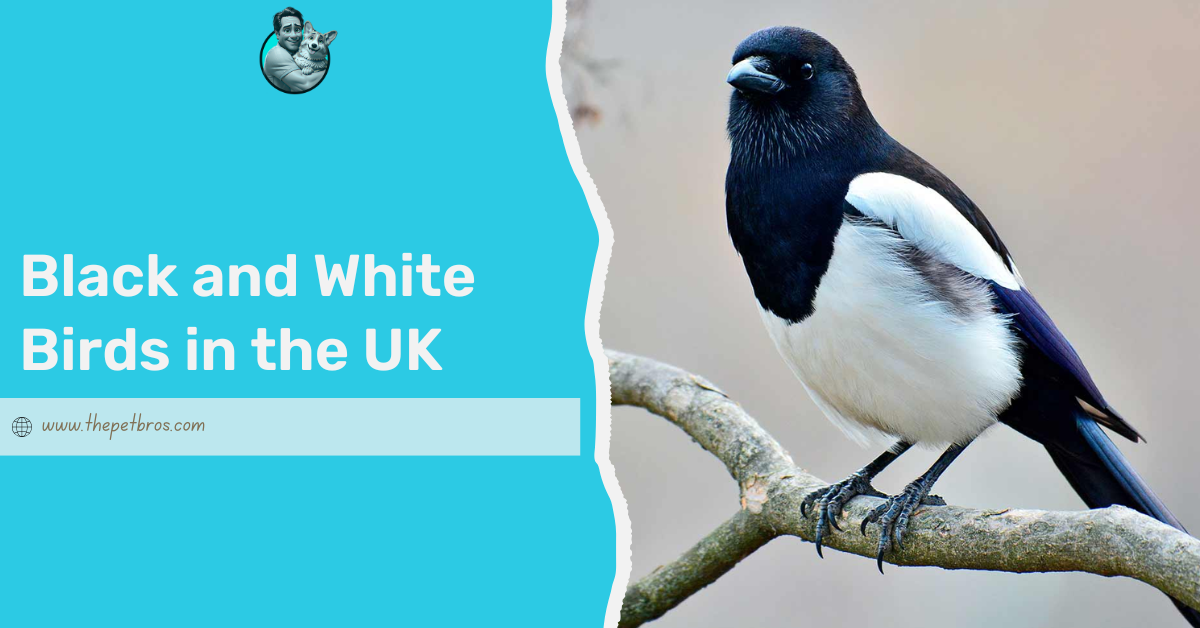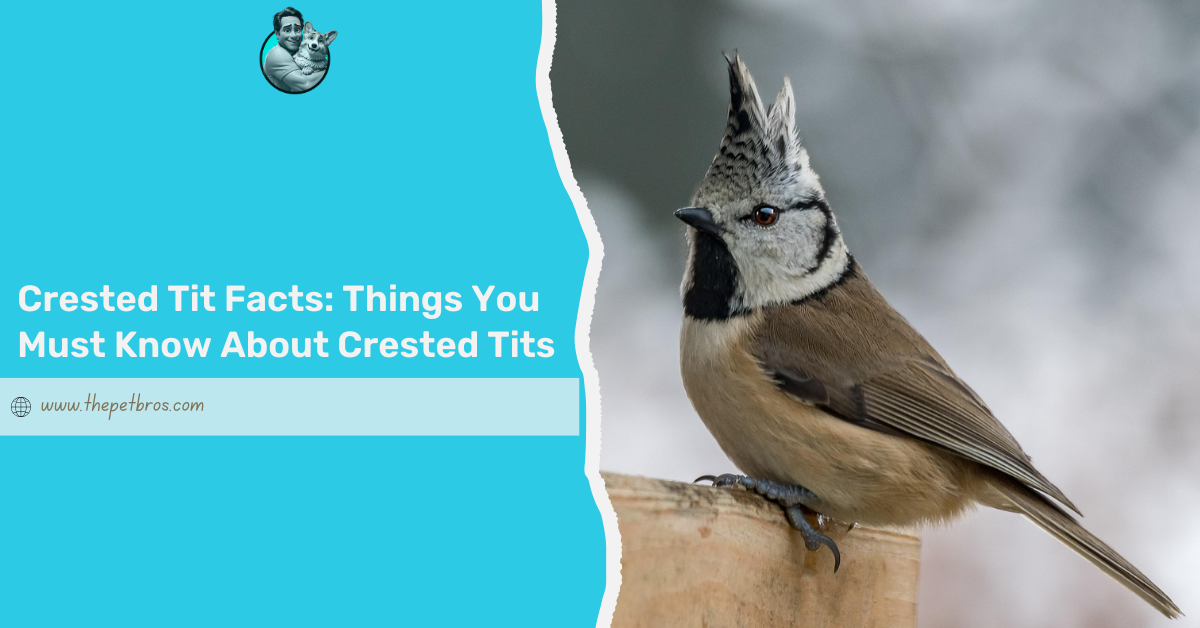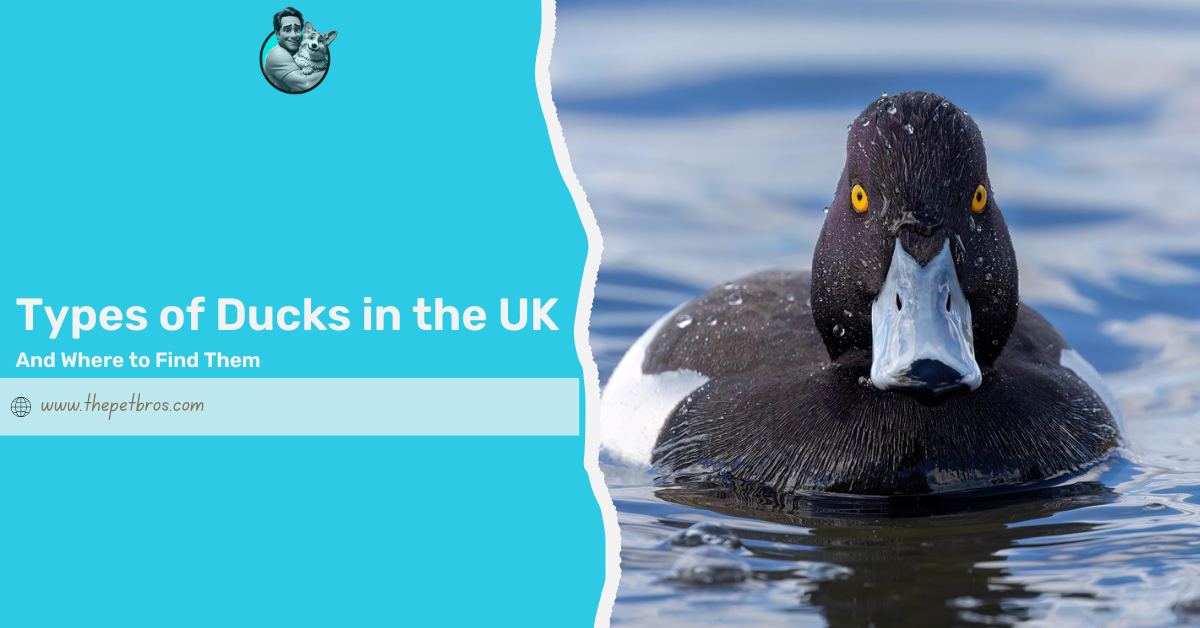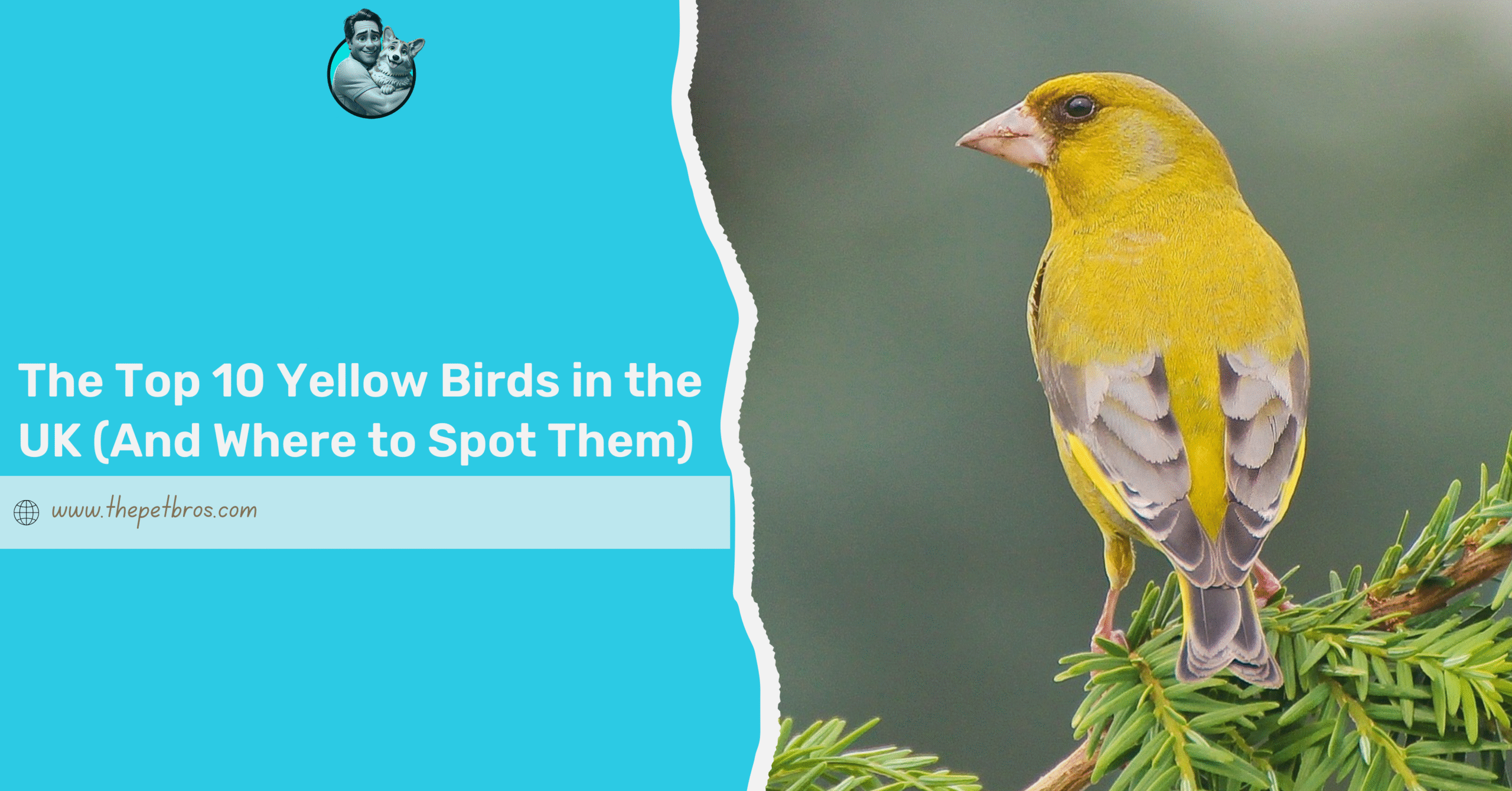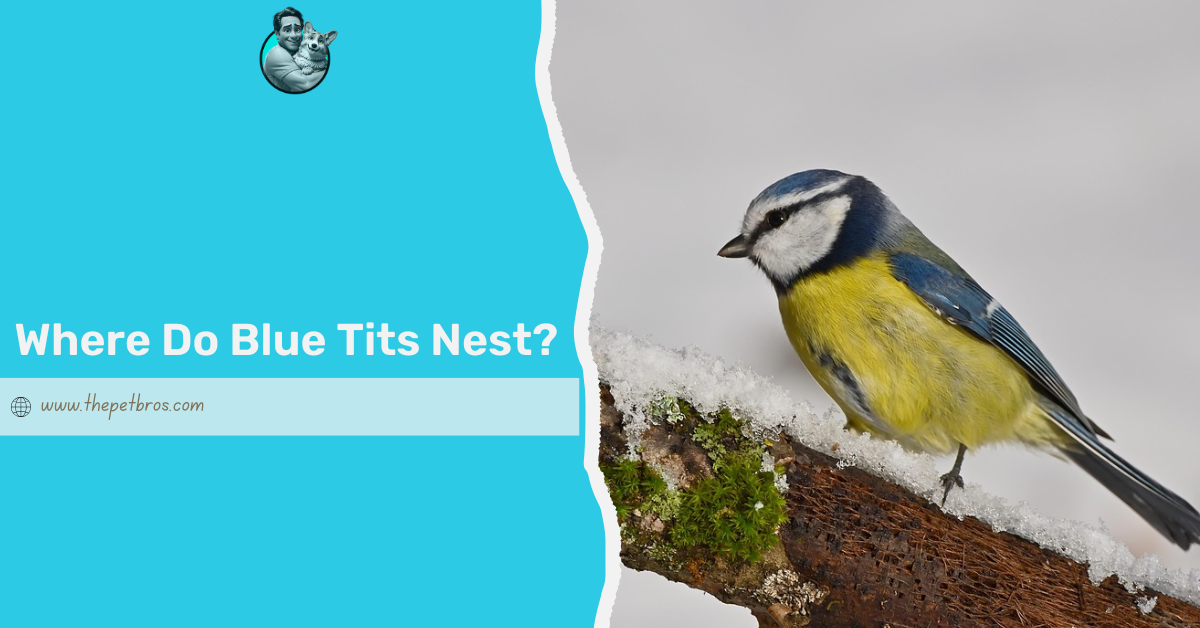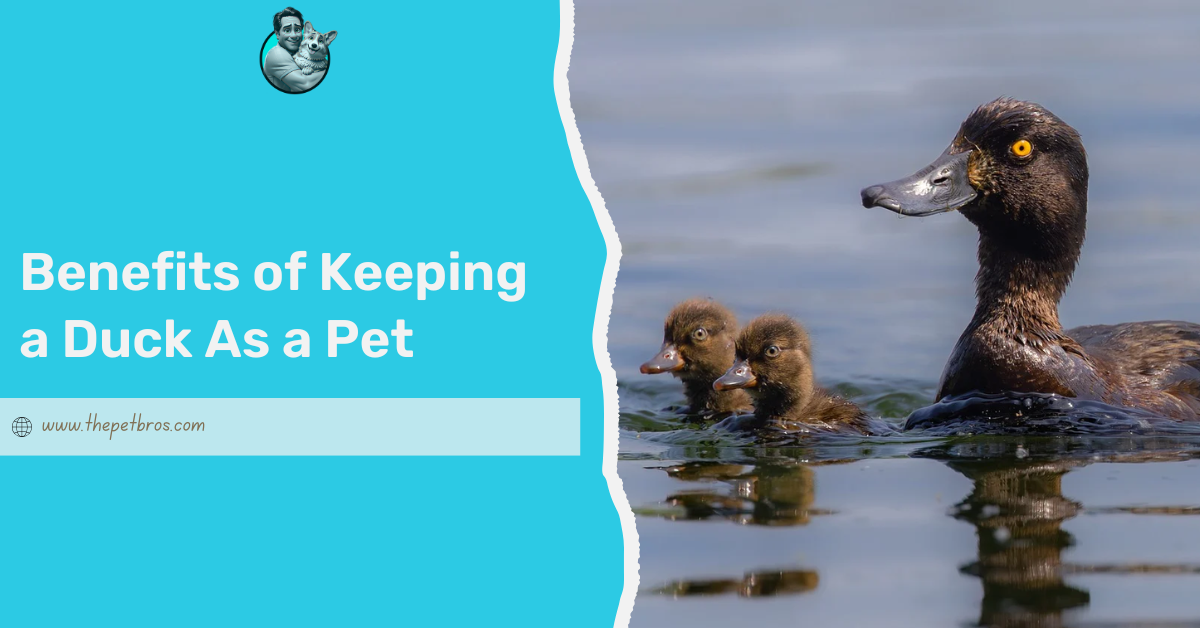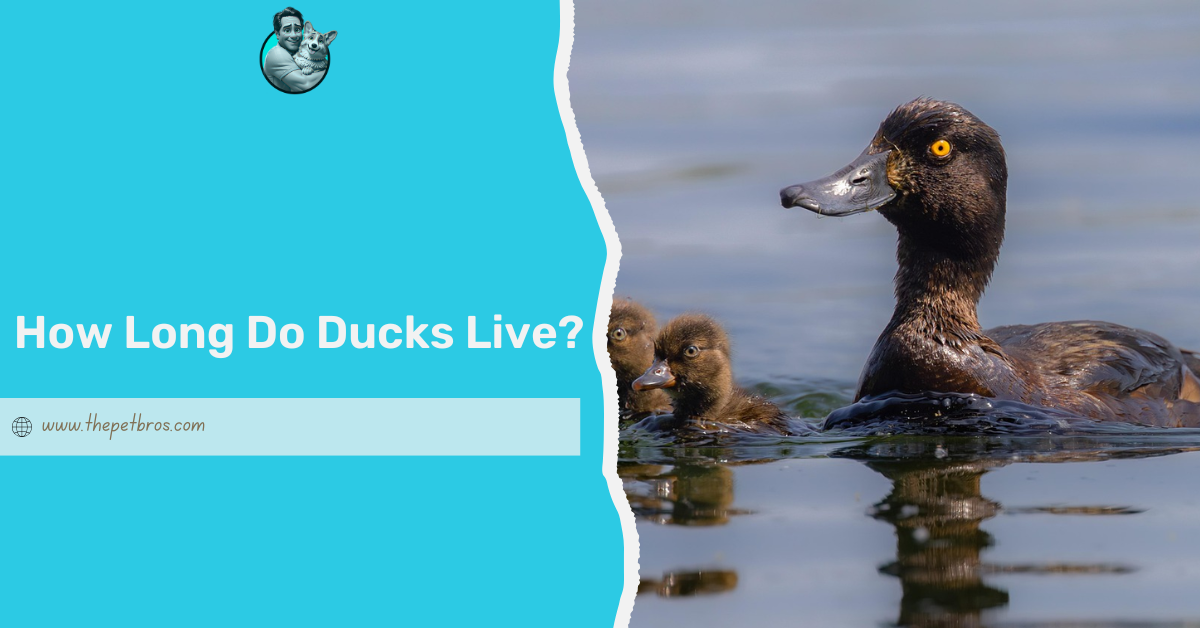Something about black and white birds is fascinating, isn’t there? Maybe it’s the contrast of their plumage or how effortlessly they catch the eye, even on a dull British day. You might see one perched on a garden fence or hopping across a car park, its striking colours impossible to miss.
In this guide, we will discuss 10 of these monochrome marvels. You’ll learn about their unique features, where to spot them, and even get a glimpse of their quirks and habits. Ready to meet some of the most stylish black and white birds in the UK? Let’s get started!
Top 15 Black and White Birds in the UK
Every black and white bird in the UK has unique features, behaviours, and habitats. Notably, these birds aren’t just pretty to look at — they play an important role in nature, much like other common British birds that brighten our gardens and parks. Let’s explore some of these birds below:
1. Magpie (Pica pica)
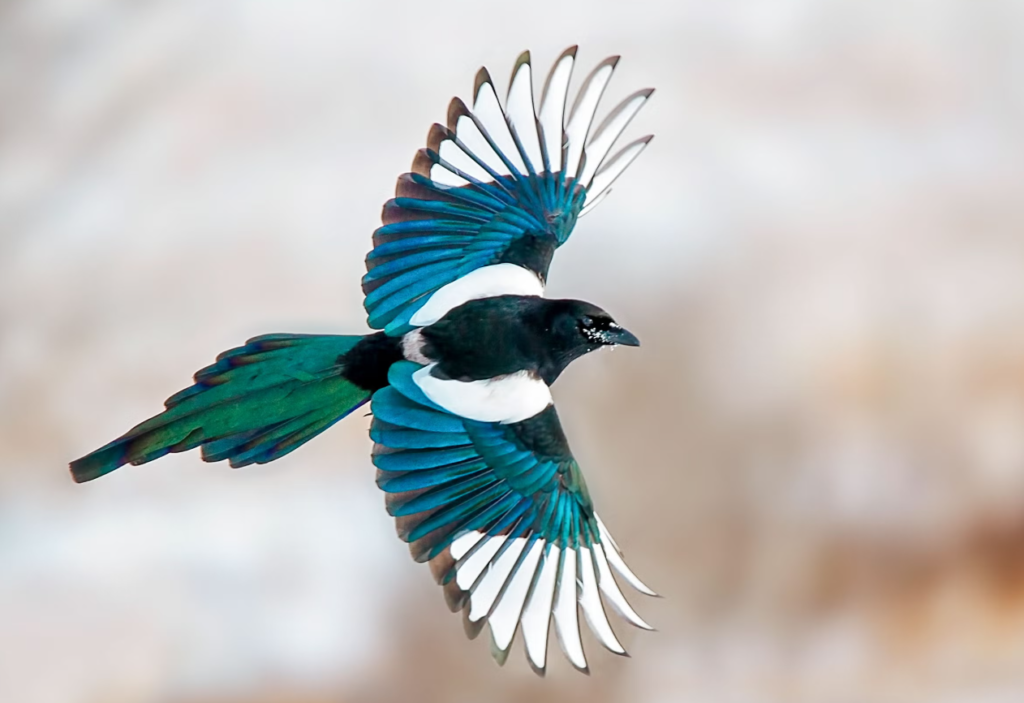
The magpie is an intelligent and mysterious black and white bird, typically known for its bold behaviour, problem-solving skills, and shimmering black and white plumage. Whether scavenging or building intricate nests, this bird adds curiosity to any landscape.
- Habitat: Found in gardens, farmland, and urban areas.
- Weight: 200–250 grams.
- Wingspan: 52–60 cm.
- Diet: Omnivorous—eating insects, small mammals, eggs, seeds, and food scraps.
- Interesting Fact: Magpies are one of the few bird species that can recognise themselves in mirrors.
2. Pied Wagtail (Motacilla alba yarrellii)
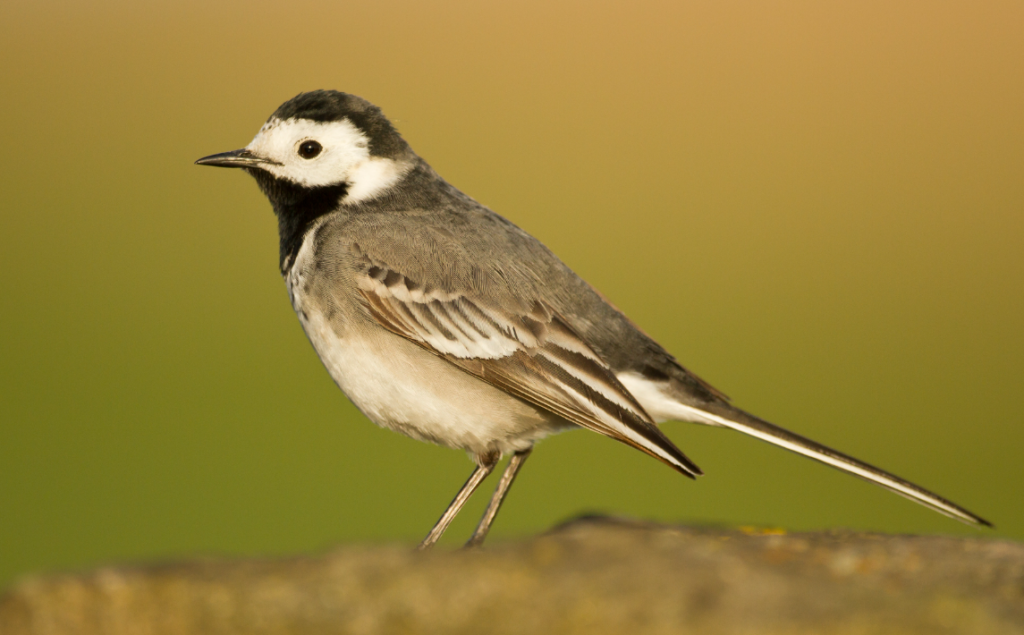
This lively little bird is always on the move, its constant tail-wagging making it a joy to watch. With a sleek black and white coat, the pied wagtail is as charming as it is energetic.
- Habitat: Common in urban areas, fields, riverbanks, and car parks.
- Weight: 17–25 grams.
- Length: 18 cm.
- Diet: Insects, larvae, and occasionally seeds.
- Interesting Fact: Pied wagtails gather in large roosts for warmth in winter, sometimes choosing rooftops or shopping centres.
3. Coal Tit (Periparus ater)
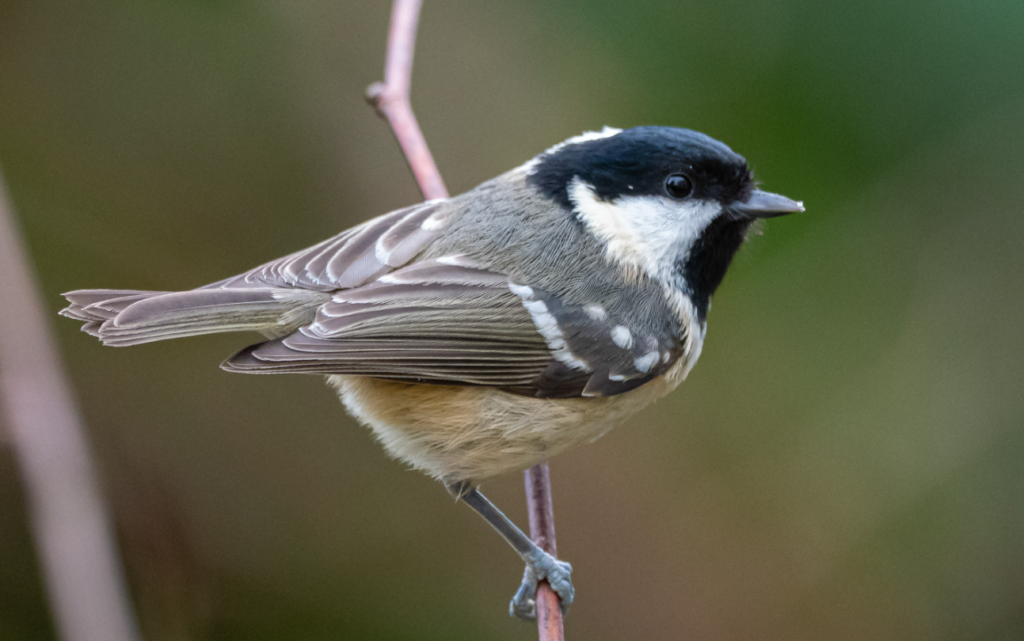
A small yet bold bird, the coal tit’s striking black cap and white cheek patches make it easily identifiable. Despite its size, it’s known for its energetic foraging and ability to adapt to various habitats, just as other members of the tit families.
- Habitat: Woodlands, gardens, and parks.
- Weight:10–12 grams.
- Length: 9–12 cm.
- Diet: Insects, seeds, and small berries.
- Interesting Fact: The coal tit is one of the few birds that will stash food for later, often hiding seeds in tree bark or other crevices.
4. Barn Owl (Tyto alba)
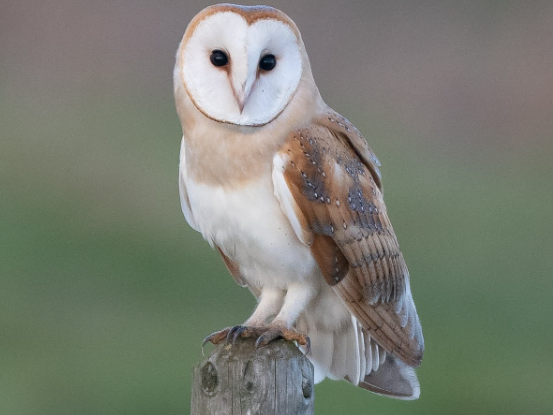
Although this black and white bird is better known for its haunting calls and nocturnal nature, its black and white speckled plumage adds to its ghostly allure. A silent hunter, it is a symbol of Britain’s countryside.
- Habitat: Grasslands, farmlands, and the edges of woodlands.
- Weight: 400–600 grams.
- Wingspan: 80–95 cm.
- Diet: Small mammals like voles, mice, and shrews.
- Interesting Fact: Barn owls have asymmetrical ears, enabling them to locate prey in complete darkness.
5. Black-Headed Gull (Chroicocephalus Ridibundus)
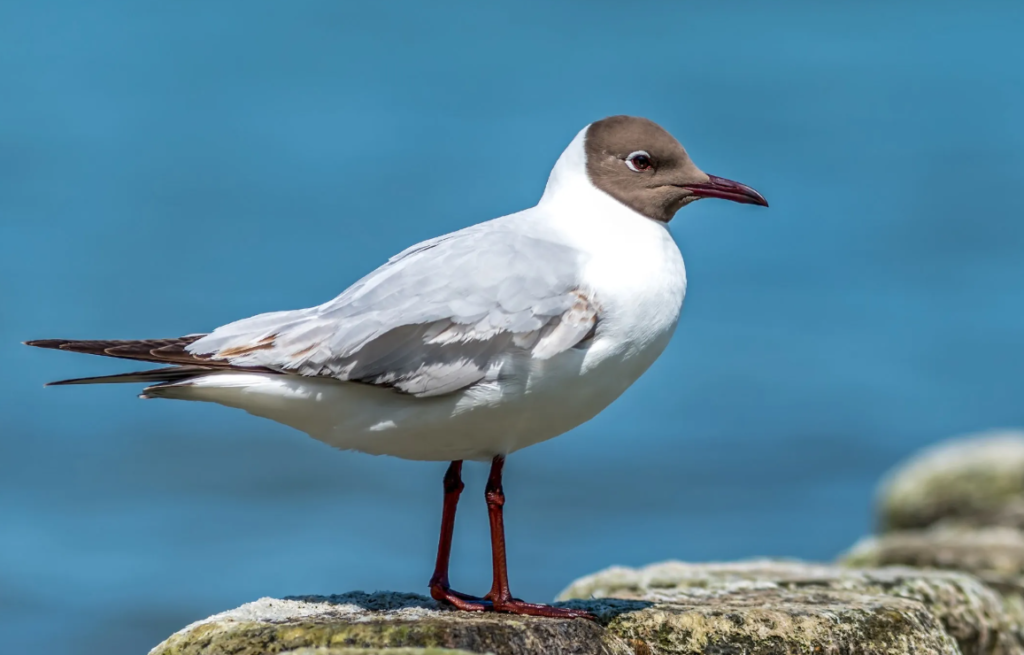
Adaptable and opportunistic, the black-headed gull is a familiar sight in urban areas and wetlands. Its agile flying and foraging habits make it a survivor in any environment.
- Habitat: Wetlands, coastal areas, parks, and rubbish tips.
- Weight: 250–400 grams.
- Wingspan: 94–110 cm.
- Diet: Fish, insects, and scavenged scraps.
- Interesting Fact: Despite its name, the black-headed gull only has a fully dark head during summer.
6. White-Tailed Eagle (Haliaeetus albicilla)

This black and white bird is known as the UK’s largest bird of prey. Due to its size and powerful flight, this bird commands attention. Additionally, its white tail feathers and broad wings make it an unmistakable figure in the sky.
- Habitat: Coastal cliffs and islands, particularly in Scotland.
- Weight: 4–6.9 kilograms.
- Wingspan: Up to 2.4 metres.
- Diet: Fish, seabirds, and carrion.
- Interesting Fact: It is known as the “flying barn door” due to its immense wingspan.
7. Great Spotted Woodpecker (Dendrocopos major)
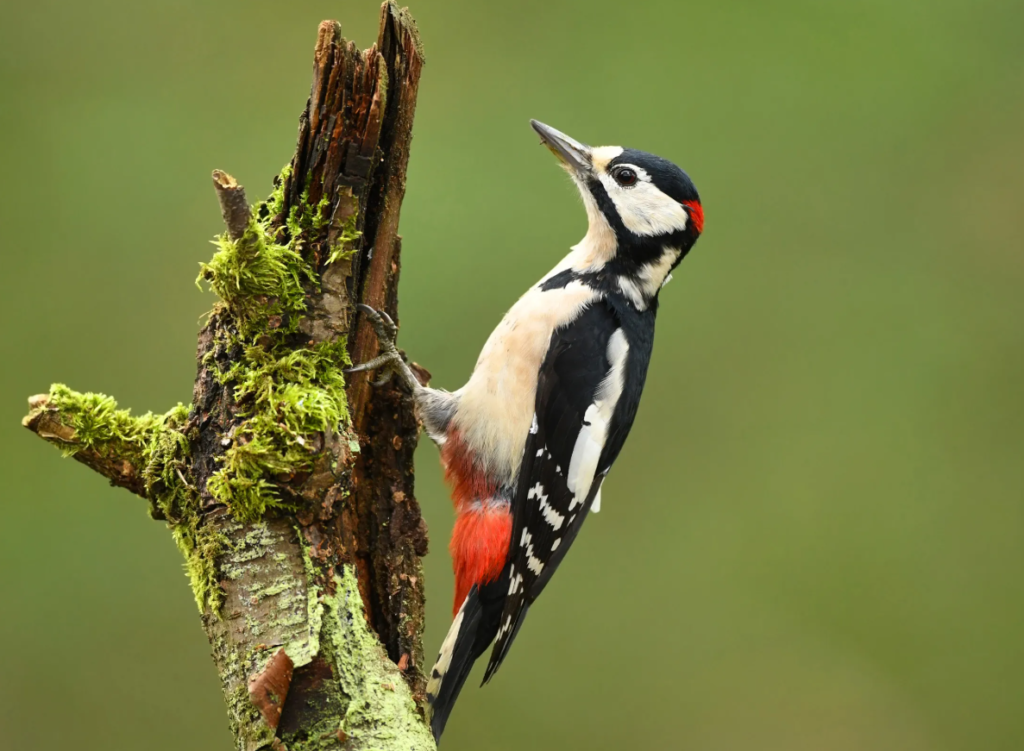
The great spotted woodpecker brings both sound and spectacle to UK woodlands. Its striking black and white plumage is complemented by the red feathers on its head and tail.
- Habitat: Deciduous woodlands, gardens, and parks.
- Weight: 70–98 grams.
- Length: 23 cm.
- Diet: Insects, larvae, and occasionally tree sap.
- Interesting Fact: The woodpecker’s tongue is so long that it wraps around its skull for protection.
8. Avocet (Recurvirostra avosetta)

The avocet’s elegance is unmatched, with its black and white plumage and distinct upturned bill. This wading bird is a symbol of conservation success in the UK.
- Habitat: Coastal wetlands, estuaries, and lagoons.
- Weight: 260–290 grams.
- Wingspan: 77–80 cm.
- Diet: Aquatic insects, crustaceans, and small fish.
- Interesting Fact: The Avocet is an emblem of the RSPB, symbolising successful conservation efforts.
9. Oystercatcher (Haematopus ostralegus)

You can easily spot these black and white birds, thanks to their vivid orange bill and black-and-white body, the oystercatcher is a coastal bird with an appetite for shellfish. Its name might be misleading, but its foraging skills are not.
- Habitat: Coastal areas, estuaries, and inland wetlands.
- Weight: 400–700 grams.
- Length: 40–45 cm.
- Diet: Mussels, worms, and other shellfish.
- Interesting Fact: Their bills are adapted to hammer or prise open shellfish, depending on the bird’s diet.
10. Razorbill (Alca torda)

The razorbill is a sleek seabird with a black back and white underparts, perfectly camouflaged for life on open water. It only ventures to land for breeding.
- Habitat: Coastal cliffs during breeding season; open sea otherwise.
- Weight: 600–800 grams.
- Wingspan: 60–69 cm.
- Diet: Small fish like sand eels.
- Interesting Fact: Razorbills can dive up to 120 metres for food.
11. Little Grebe (Tachybaptus ruficollis)
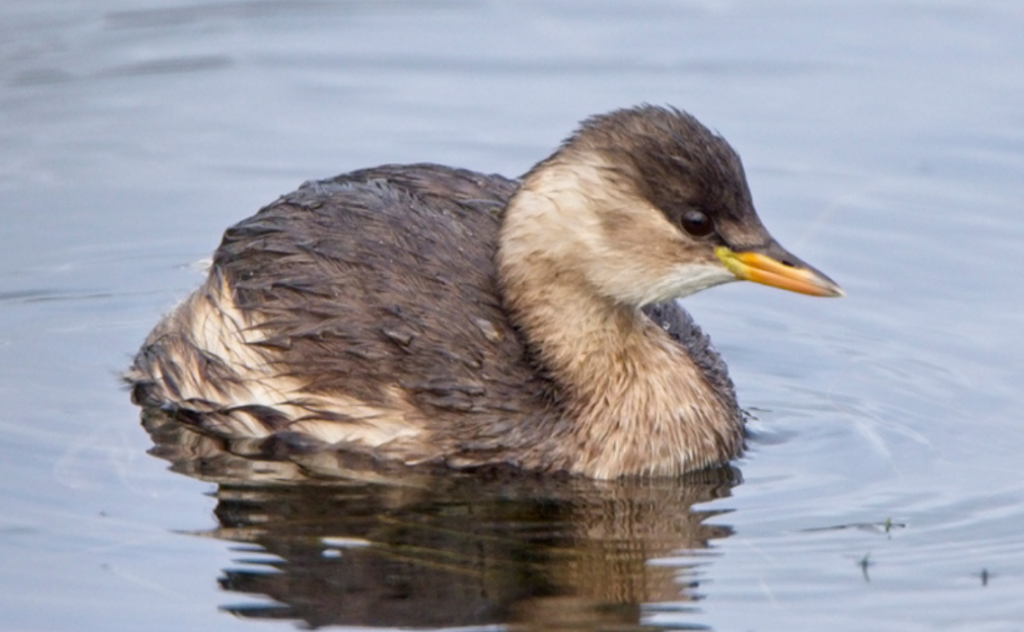
The little grebe, or dabchick, is a master of disguise in its black and white winter plumage. Known for its diving skills, it often disappears underwater in the blink of an eye.
- Habitat: Lakes, ponds, and slow-moving rivers.
- Weight: 130–235 grams.
- Length: 23–29 cm.
- Diet: Small fish, insects, and crustaceans.
- Interesting Fact: Little grebes are expert divers, often disappearing beneath the water before you can spot them properly.
12. Gannet (Morus bassanus)
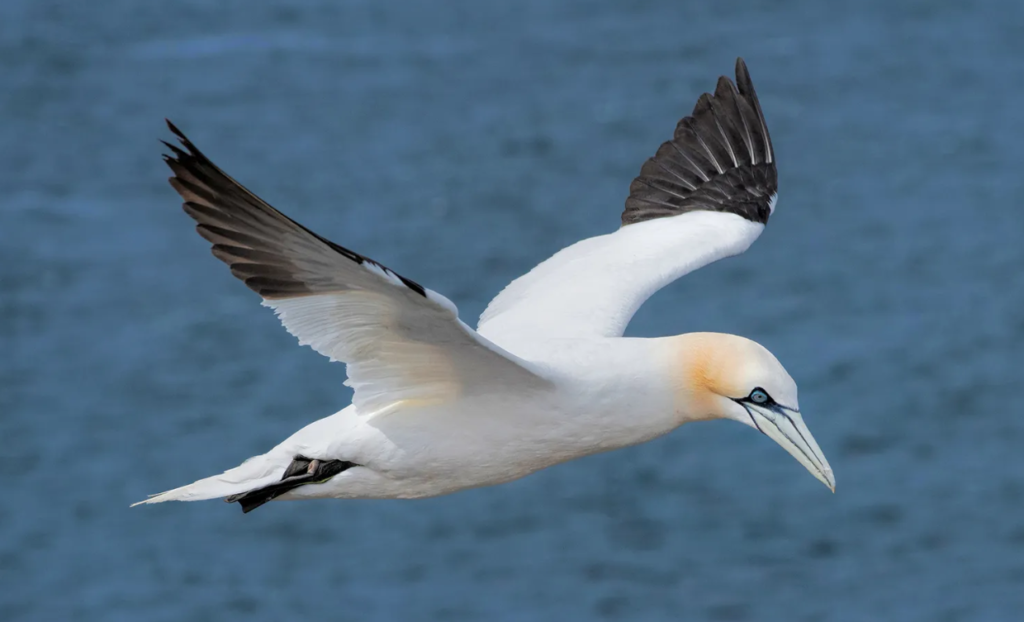
A list of common black and white birds in the UK is definitely incomplete without the Gannet. The Gannet is a majestic black and white bird known for its dramatic plunge-diving and sleek black-and-white plumage. It is one of the largest seabirds found around the UK’s coastline.
- Habitat: Coastal cliffs and offshore waters, often in large colonies.
- Weight: 2.5–4.5 kilograms.
- Wingspan: 1.6–1.8 metres.
- Diet: Primarily fish, caught by diving from great heights.
- Interesting Fact: Gannets can dive from heights of over 30 metres and reach up to 60 miles per hour as they hit the water.
13. Eider (Somateria mollissima)
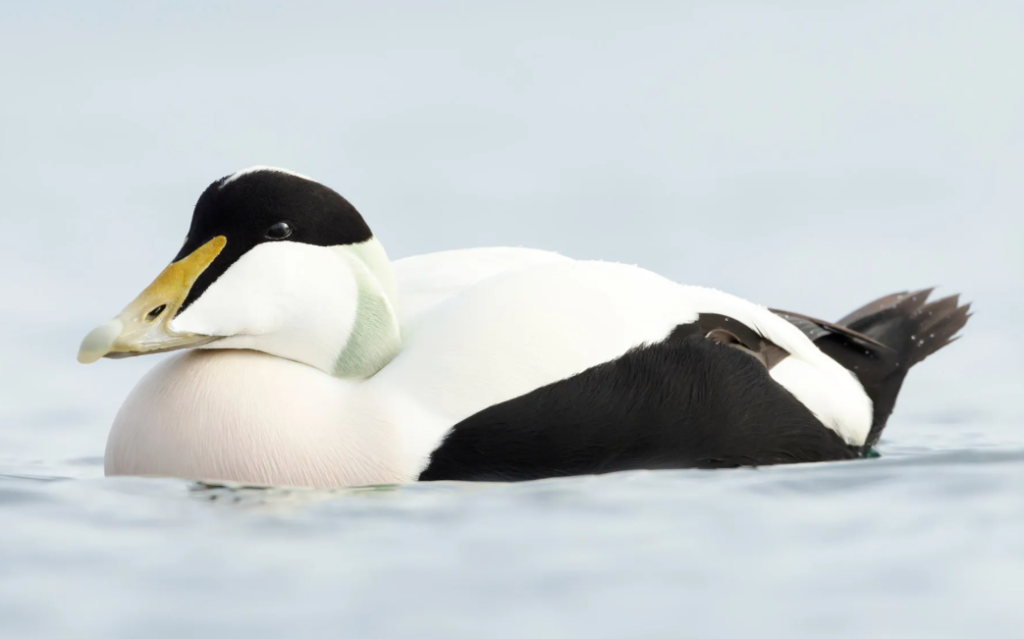
The eider is a large sea duck, well-known for its striking black and white plumage and its down feathers, which are highly prized. It is a common sight along the northern coasts of the UK.
- Habitat: Coastal waters, estuaries, and rocky shorelines.
- Weight: 1.5–2.5 kilograms.
- Wingspan: 70–85 cm.
- Diet: Molluscs, crustaceans, and small fish.
- Interesting Fact: Eider down is used in bedding and clothing, as it is both warm and lightweight.
14. Common Scoter (Melanitta nigra)
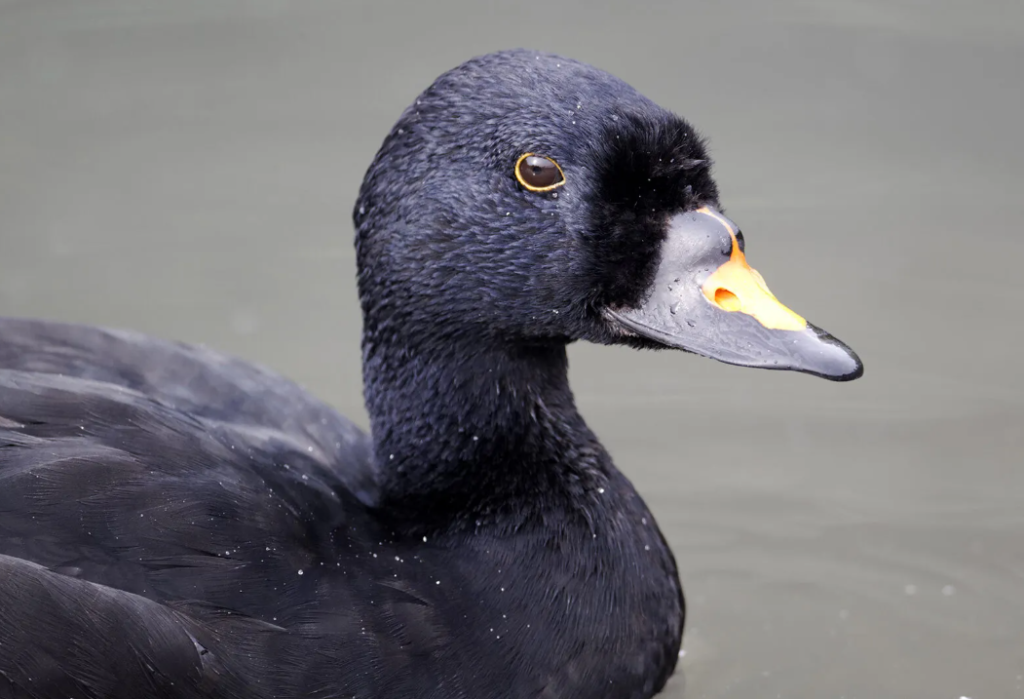
This large sea duck, often mistaken for other similar species, is most commonly seen in the UK’s coastal waters. Its black plumage and bright orange bill give it a striking look in flight.
- Habitat: Coastal waters, estuaries, and lakes.
- Weight: 700–900 grams.
- Wingspan: 70–85 cm.
- Diet: Molluscs, crustaceans, and marine invertebrates.
- Interesting Fact: The common scoter often forms large flocks, which can number thousands, particularly during migration.
15. Manx Shearwater (Puffinus puffinus)
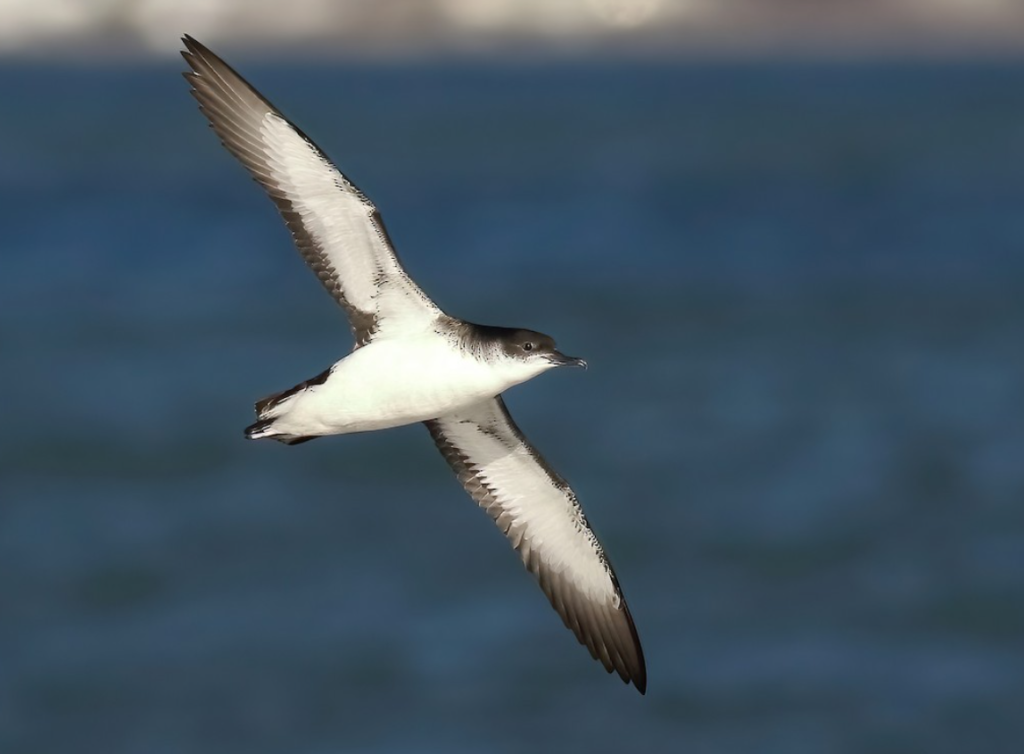
This small, agile seabird is known for its incredible migratory abilities and black-and-white plumage. It spends most of its life at sea, returning to land only to breed.
- Habitat: Coastal islands for breeding; a vast ocean for the rest of the year.
- Weight: 250–350 grams.
- Wingspan: 84–93 cm.
- Diet: Small fish, squid, and crustaceans.
- Interesting Fact: The Manx Shearwater migrates from the UK to the Southern Hemisphere for the winter, a round-trip journey of over 16,000 km.
Conclusion
So, isn’t it evident that there are numerous black and white birds in the UK? Whether you’re watching a magpie’s clever antics or admiring the graceful dive of a gannet, these birds remind us of the diverse and intricate natural world around us.
The next time you see a black and white bird in your local park, garden, or coastal area, take a moment to appreciate its unique characteristics. Keep your eyes open – you never know when you’ll spot another feathered friend. Do you have any questions for us? Leave them in the comments below!
Frequently Asked Questions
Can I Attract Black and White Birds to My Gardens?
Yes, you can attract black and white birds like magpies, pied wagtails, and coal tits. But first, you must provide various food sources such as seeds, mealworms, and suet. Secondly, fresh water should be available for drinking and bathing. You may also need to create a safe habitat with shrubs, trees, or bird boxes for nesting and shelter. Avoid using pesticides, as these can harm the insects many of these birds feed on.
Does a Wind Chime Prevent Birds From Visiting Gardens?
Although wind chimes may initially startle birds due to their sound and movement, studies suggest that birds quickly acclimate to them. Therefore, wind chimes are generally ineffective as long-term bird deterrents. Instead, factors like feeder placement, food availability, and habitat features play more significant roles in attracting or deterring birds.






